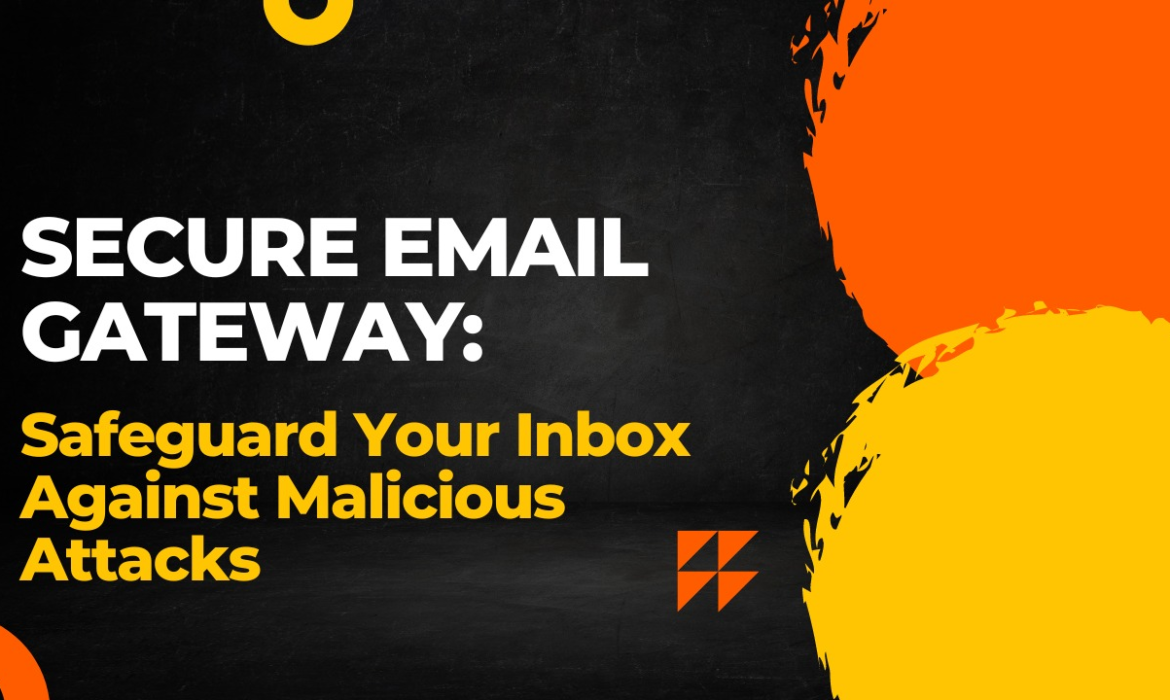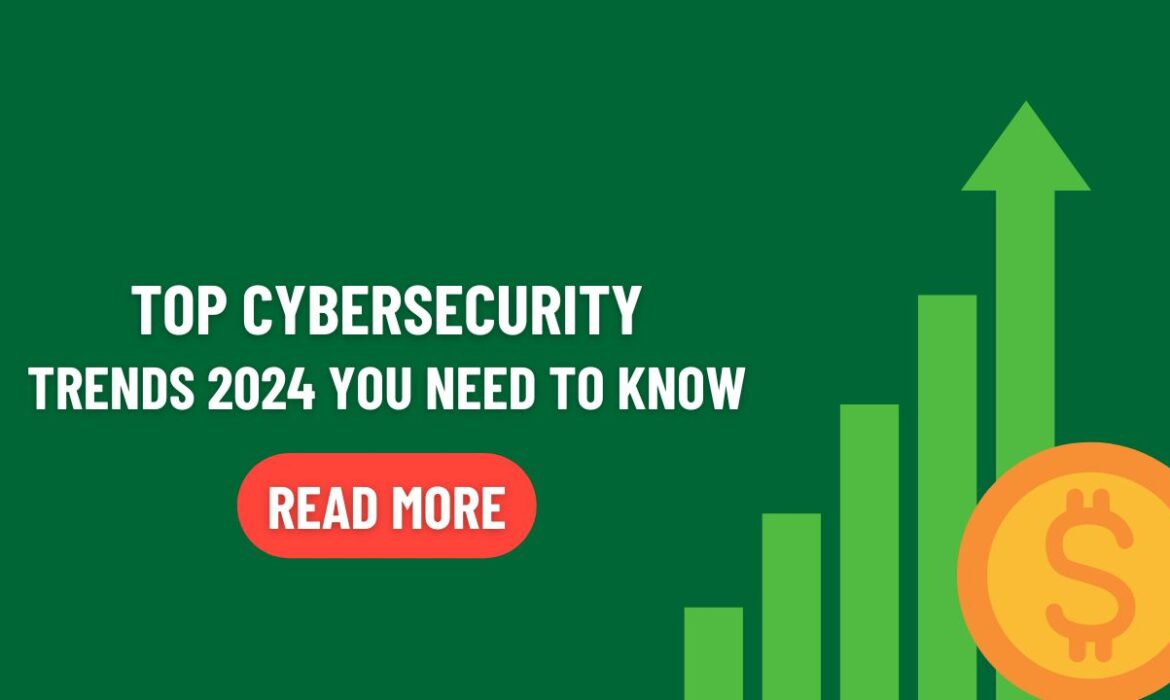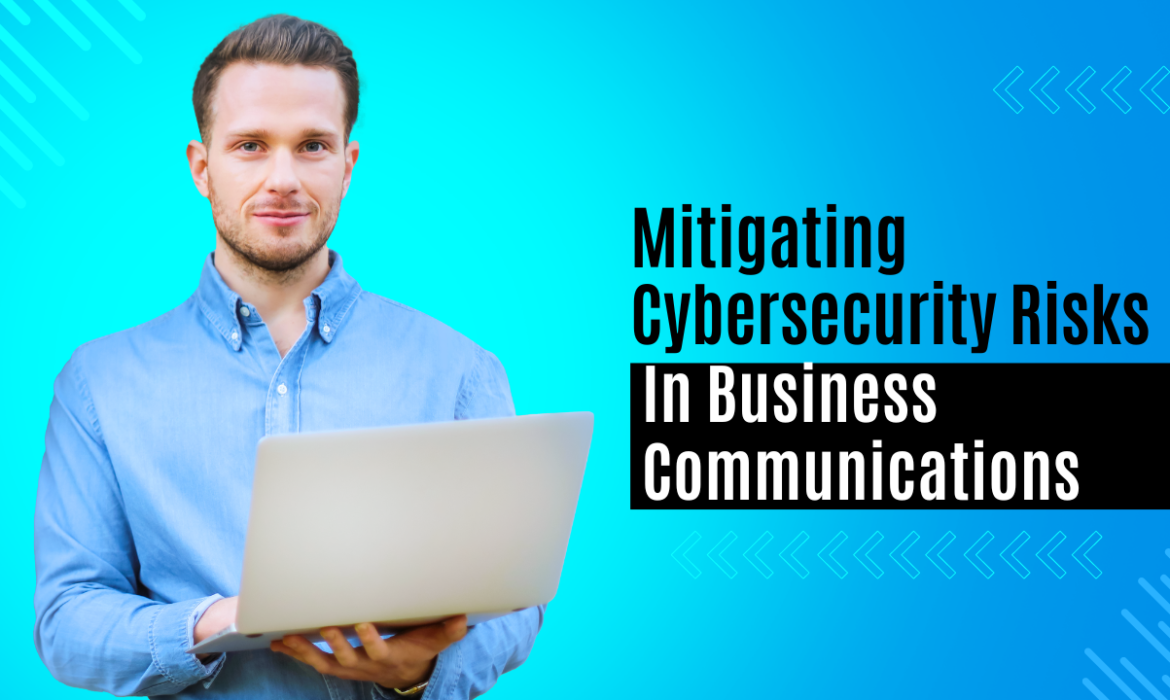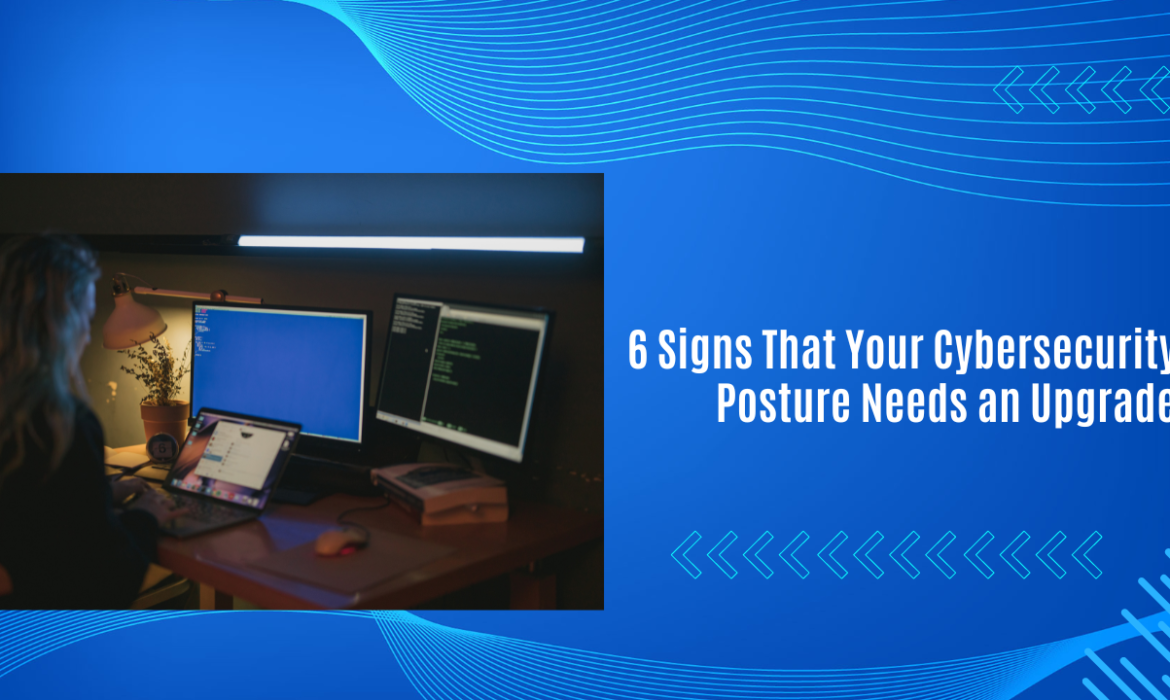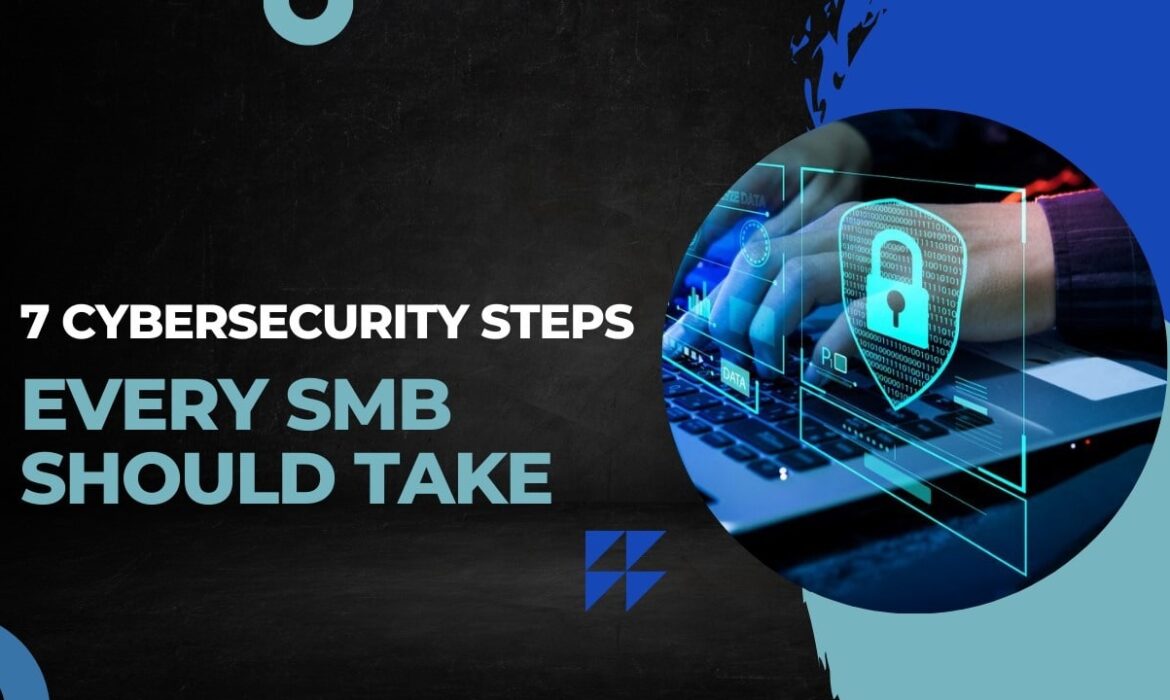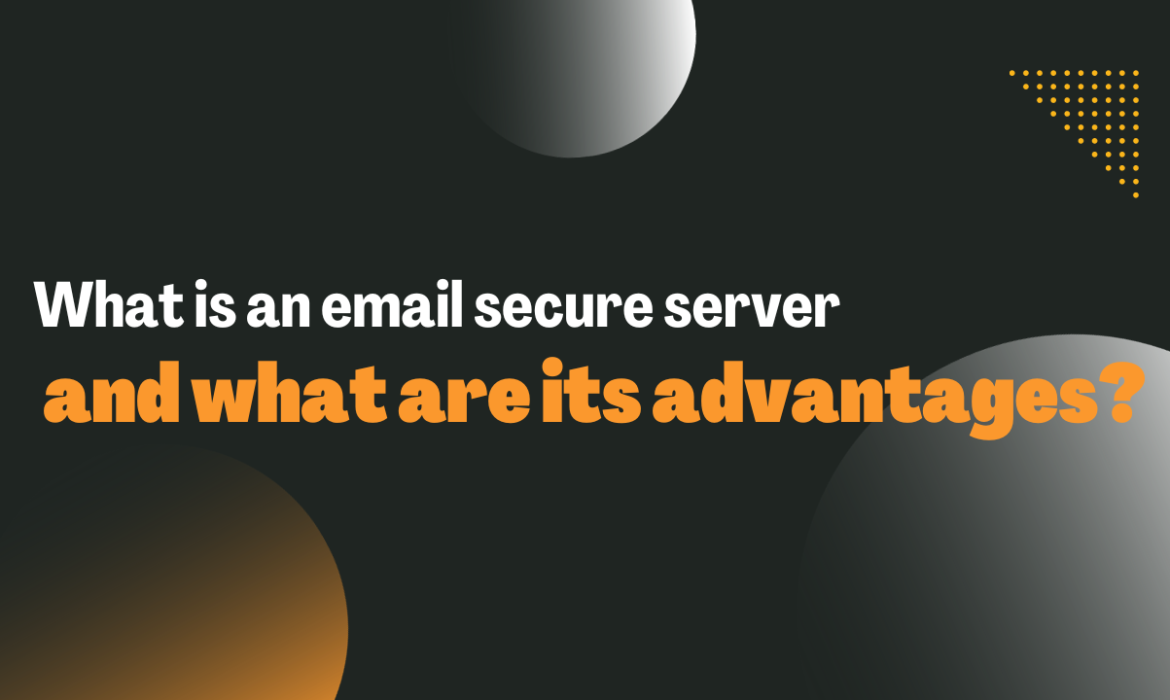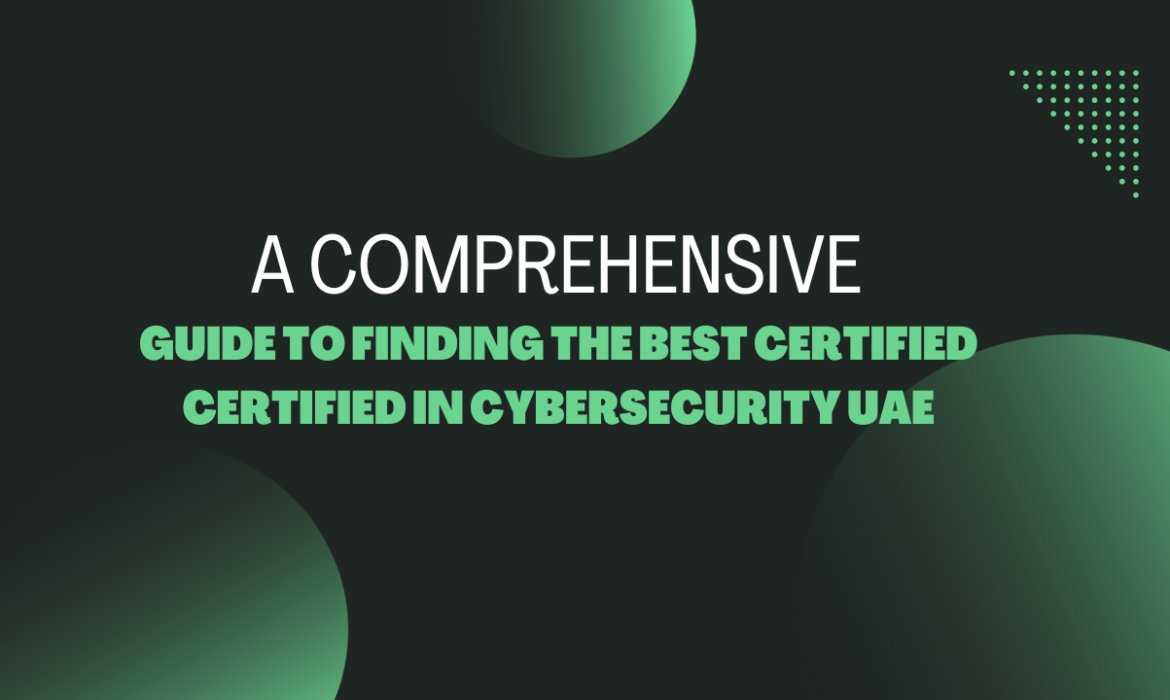Secure Email Gateway: Safeguarding Your Inbox Against Malicious Attacks
In an age of digital communication, email remains an important medium for personal and professional correspondence. But while email is convenient it comes with the ever-present threat of malicious attacks. Cybercriminals are constantly developing sophisticated ways to exploit vulnerabilities and compromise sensitive information. In order to strengthen your email security, organizations and individuals alike are turning to one of the most important aspects of cybersecurity – a secure email gateway.
Understanding the Threat Landscape:
Malicious email attacks come in many forms, including phishing, ransomware, malware, and social engineering. These threats are designed to deceive recipients, access unauthorized systems, steal sensitive information, or disrupt operations. Understanding how these attacks are evolving is the first step in implementing an effective security strategy.
The role of a secure email gateway:
Secure email gateways act as a filter between the email server and the recipient’s inbox, scrutinizing incoming emails for possible threats. Its primary purpose is to detect and prevent malicious content before it reaches the user. Here are the main features and benefits.
Enhanced Risk Identification:
SEG uses advanced threat detection techniques including machine learning, heuristics and signature-based detection to identify known and emerging threats. Real-time analysis of email content, attachments, and links helps identify patterns and bad practices.
Also Read: Top Cybersecurity Trends 2024 You Need to Know
Spam filtering:
By filtering out spam and unwanted emails, SEG reduces clutter in the inbox, allowing users to focus on quality communication.
Spam filtering also plays a role in preventing phishing attacks as well, since many phishing attempts come from spam emails.

URL and link security:
SEG scans and analyzes URLs and links in emails to identify potential phishing or malicious websites.
It blocks access to suspicious links, and protects users from visiting harmful websites that could inadvertently compromise their security.
Data Loss Prevention (DLP):
DLP Data Loss Prevention features in SEG help prevent unauthorized sharing of sensitive information. It analyzes incoming emails for confidential data and enforces data leakage prevention policies.
Encryption and Authentication:
SEG supports email encryption to protect message content, and ensures that information remains private even when blocked.
Authentication techniques, such as DMARC (Domain-based Message Authentication, Reporting, and Conformance) help prevent email spoofing and phishing attacks.
Best practices to implement:
For a secure email gateway to work properly, consider the following best practices.
Regular updates and patching:
Update the SEG system with the latest security patches to address vulnerabilities and ensure optimal security.
Staff Training:
Educate users on email security best practices, including detecting phishing attempts, verifying sender authenticity and avoiding suspicious link clicks.
Multiple layers of protection:
Integrate SEG with other security mechanisms such as endpoint security and network security to create a multi-layered defense against a variety of cyber threats.
Conclusion:
With email being the cornerstone of communication, the importance of protecting this channel cannot be overstated. Secure email gateways are an integral part of a comprehensive cyber security system, providing robust protection against malicious email attacks. By implementing advanced threat detection, spam filtering and encryption, organizations and individuals can protect their sensitive information and maintain a secure digital communications environment Investing in secure email gateways in is an investment in your digital infrastructure’s resilience against the ever-evolving landscape of cyber threats. Contact us at Green Edge Computers to know more.
Top Cybersecurity Trends 2024 You Need to Know
Cybersecurity Trends 2024 : In the ever-evolving landscape of digital technology, staying ahead of cybersecurity trends is crucial to safeguarding sensitive information and maintaining the integrity of digital ecosystems. As we approach 2024, the cybersecurity landscape is poised for significant transformations, with emerging threats and innovative solutions shaping the industry. In this comprehensive guide, we will delve into the top cybersecurity trends for 2024 that every individual and organization should be aware of to ensure robust digital defense.
1. Artificial Intelligence (AI) and Machine Learning (ML) in Cybersecurity
Artificial Intelligence and Machine Learning are set to play pivotal roles in cybersecurity strategies in 2024. These technologies enable faster threat detection and response by analyzing vast datasets to identify patterns and anomalies. AI-driven cybersecurity solutions can adapt and learn from new threats, enhancing the overall resilience of security systems.
2. Zero Trust Security Model
The Zero Trust security model is gaining prominence as organizations move away from traditional perimeter-based security. In 2024, the focus will be on continuous authentication and authorization, ensuring that no entity, whether inside or outside the network, is automatically trusted. This approach adds an extra layer of security, reducing the risk of unauthorized access and potential breaches.
3. Quantum-Safe Cryptography
With the advent of quantum computing, the encryption landscape is at risk. In response, the cybersecurity industry is developing quantum-safe cryptographic algorithms to protect sensitive data from the threat of quantum attacks. Organizations need to prepare for the post-quantum era by adopting quantum-resistant encryption methods.
4. Cloud Security Evolution
As cloud adoption continues to rise, so does the need for robust cloud security measures. In 2024, cybersecurity trends will focus on securing cloud environments, emphasizing configurations that prioritize data privacy and compliance. Multi-cloud security strategies and tools that provide visibility into cloud-based assets will be crucial for organizations.
5. Extended Detection and Response (XDR)
Extended Detection and Response (XDR) solutions will become increasingly prevalent in 2024. XDR integrates various security products and correlates data from multiple sources to provide a comprehensive view of potential threats. This holistic approach enhances the efficiency of threat detection and response, minimizing the impact of cyber incidents.
6. Internet of Things (IoT) Security
The proliferation of IoT devices introduces new vulnerabilities to networks. In 2024, cybersecurity strategies will include robust measures to secure IoT devices and networks, addressing potential entry points for cyber threats. The focus will be on implementing security measures at both the device and network levels to mitigate risks associated with the expanding IoT ecosystem.
7. Biometric Authentication
Biometric authentication, such as fingerprint scanning and facial recognition, will continue to gain traction as a secure method of identity verification. In 2024, we can expect increased integration of biometric authentication in cybersecurity protocols, providing a more secure and user-friendly alternative to traditional password-based systems. Contact us at Green Edge Computers to know more.
8. Supply Chain Security
As cyberattacks on the supply chain become more sophisticated, ensuring the security of the entire supply chain will be a top priority in 2024. Organizations will focus on vetting and securing third-party vendors, implementing secure development practices, and enhancing visibility into supply chain activities to mitigate the risk of supply chain attacks.
9. Cybersecurity Skills Development
The shortage of cybersecurity professionals is a growing concern. In 2024, there will be a heightened emphasis on Cybersecurity Trends 2024 skills development through training programs, certifications, and educational initiatives. Organizations will invest in building a skilled workforce to effectively combat evolving cyber threats.
10. Regulatory Compliance and Privacy
With an increasing number of data protection regulations globally, organizations will prioritize compliance with regulatory frameworks in 2024. Ensuring adherence to privacy laws and data protection standards will be essential to avoid legal repercussions and safeguard customer trust.
In conclusion, as we step into 2024, the cybersecurity landscape is undergoing significant changes. Artificial Intelligence, Zero Trust, Quantum-Safe Cryptography, Cloud Security, XDR, IoT Security, Biometric Authentication, Supply Chain Security, Cybersecurity Skills Development, and Regulatory Compliance are the key trends that will shape the industry. Staying informed and implementing proactive cybersecurity measures based on these trends is critical for individuals and organizations alike. By embracing these advancements, we can collectively fortify our digital defenses and navigate the evolving cybersecurity landscape with resilience and confidence.
Mitigating Cybersecurity Risks In Business Communications
In the fast-paced digital landscape of today’s business world, communication is the lifeblood that keeps organizations thriving. Whether it’s emails, instant messaging, video conferencing, or collaborative platforms, businesses rely heavily on various communication channels to keep operations smooth and efficient. However, with the increasing reliance on technology comes the escalating threat of cybersecurity risks that can jeopardize sensitive information and disrupt business operations. In this blog post, we’ll delve into the challenges posed by cybersecurity risks in business communications and explore effective strategies to mitigate these threats.
Understanding the Landscape of Cybersecurity Risks
The realm of cybersecurity risks in business communications is vast and continually evolving. From phishing attacks and malware infections to data breaches and ransomware, the adversaries are becoming more sophisticated in their techniques. Communication channels that are not adequately secured can serve as entry points for cybercriminals to exploit vulnerabilities, leading to severe consequences for the affected organizations.
Phishing Attacks
Phishing attacks remain one of the most prevalent and insidious threats in the cybersecurity landscape. Cybercriminals often disguise themselves as trustworthy entities to trick individuals into revealing sensitive information such as login credentials or financial details. In the context of business communications, phishing attacks can manifest through deceptive emails, messages, or even fraudulent websites that impersonate legitimate platforms.
Malware Infections
Malware, encompassing viruses, trojans, and ransomware, poses a significant threat to business communication systems. Malicious software can infiltrate networks through seemingly innocuous files or links, compromising the integrity of data and disrupting normal business operations. Once inside a network, malware can quickly spread through communication channels, causing widespread damage.
Data Breaches
Data breaches involve unauthorized access to sensitive information, and they can have severe consequences for businesses. Whether it’s customer data, financial records, or intellectual property, a data breach can lead to reputational damage, legal repercussions, and financial losses. In the context of business communications, compromised accounts or insecure channels can become entry points for attackers to gain unauthorized access.
Also Read: 6 Signs That Your Cybersecurity Posture Needs an Upgrade
Strategies for Mitigating Cybersecurity Risks
As the landscape of cybersecurity risks evolves, so too must the strategies employed by businesses to safeguard their communication channels. Here are several effective strategies to mitigate cybersecurity risks in business communications:
Employee Training and Awareness
One of the first lines of defense against cybersecurity threats is a well-informed and vigilant workforce. Conduct regular training sessions to educate employees about the latest cybersecurity threats, including phishing tactics and social engineering techniques. By raising awareness, employees are better equipped to recognize and report suspicious activities, reducing the risk of falling victim to cyberattacks.
Secure Communication Platforms
Choosing and implementing secure communication platforms is paramount in mitigating cybersecurity risks. Opt for platforms that employ end-to-end encryption, multi-factor authentication, and other robust security measures. Secure communication tools not only protect sensitive data but also ensure the confidentiality and integrity of business conversations.
Regular Security Audits and Assessments
Regularly conduct security audits and assessments to identify and address vulnerabilities in communication systems. This proactive approach helps businesses stay ahead of potential threats by identifying weak points in their infrastructure and implementing necessary security patches and updates.
Strong Password Policies
Enforce strong password policies across all communication channels. Encourage the use of complex passwords and regular password changes to minimize the risk of unauthorized access. Consider implementing biometric authentication or single sign-on solutions to enhance security without sacrificing user convenience.
Email Security Measures
Email remains a primary target for cybercriminals, making robust email security measures essential. Implement email filtering systems to detect and block phishing attempts and malicious attachments. Additionally, educate employees about the importance of verifying email addresses and avoiding clicking on suspicious links.
Endpoint Security
As employees often access business communication channels from various devices, ensuring the security of endpoints is crucial. Implement endpoint protection solutions to detect and mitigate malware threats on devices connected to the business network. Regularly update and patch endpoint software to address known vulnerabilities.
Incident Response Plan
Develop a comprehensive incident response plan to address cybersecurity incidents swiftly and effectively. This plan should outline the steps to be taken in the event of a security breach, including communication protocols, containment measures, and recovery strategies. Regularly test and update the incident response plan to ensure its effectiveness.
Data Encryption
Implement encryption for sensitive data both in transit and at rest. Encryption adds an additional layer of protection to prevent unauthorized access even if communication channels or storage systems are compromised. This is particularly crucial for businesses that handle sensitive customer information or proprietary data.
Vendor Security Assessments
If your business relies on third-party vendors for communication tools or services, conduct thorough security assessments of these vendors. Ensure that they adhere to industry best practices in cybersecurity and have robust security measures in place. Weaknesses in vendor security can expose your organization to additional risks.
Continuous Monitoring and Adaptation
Cybersecurity is an ever-evolving landscape, and organizations must continuously monitor the threat landscape and adapt their strategies accordingly. Implement tools and practices for continuous monitoring of communication systems, and stay informed about emerging threats and vulnerabilities. Regularly update security policies and measures to align with the evolving nature of cybersecurity risks.
Also Read: 7 Cybersecurity Steps Every SMB Should Take
Conclusion
Mitigating cybersecurity risks in business communications is an ongoing and multifaceted effort that requires a combination of technological solutions, employee awareness, and proactive measures. By adopting a comprehensive approach to cybersecurity, businesses can create a secure communication environment that protects sensitive information, preserves business continuity, and instills confidence among stakeholders. As the digital landscape continues to evolve, organizations must remain vigilant and adaptive in their cybersecurity strategies to stay one step ahead of cyber threats. Through a combination of education, technology, and proactive measures, businesses can fortify their communication channels and navigate the digital landscape with confidence.
6 Signs That Your Cybersecurity Posture Needs an Upgrade
In an era dominated by digital advancements, the importance of a robust cybersecurity posture cannot be overstated. As technology evolves, so do the tactics employed by cybercriminals. Organizations must stay ahead of the curve and continuously upgrade their cybersecurity measures to safeguard sensitive data and maintain the trust of their stakeholders. In this blog, we’ll explore six telltale signs that indicate your cybersecurity posture may need an upgrade.
1. Outdated Software and Systems:
One of the most glaring signs that your cybersecurity posture needs attention is the use of outdated software and systems. Legacy systems often lack the latest security patches and updates, making them vulnerable to a variety of cyber threats. Cybercriminals actively exploit vulnerabilities in outdated software, making it essential for organizations to regularly update their systems and retire obsolete technologies.
Upgrading software addresses security concerns and enhances overall system performance and functionality. Employing automated patch management tools can streamline the process of keeping software up to date, reducing the window of opportunity for cyber threats to exploit weaknesses.
2. Increasing Incidents of Phishing Attacks:
Phishing attacks continue to be a prevalent and evolving threat in the cybersecurity landscape. If your organization is experiencing a surge in phishing incidents, it’s a clear indicator that your current defenses may be inadequate. Phishing attacks often involve the use of deceptive emails or messages to trick users into revealing sensitive information or downloading malicious content.
Upgrading your cybersecurity posture involves implementing advanced email filtering solutions, conducting regular phishing awareness training for employees, and deploying multi-factor authentication (MFA) to add an extra layer of security. By staying ahead of phishing trends, organizations can significantly reduce the risk of falling victim to these deceptive tactics.
3. Inadequate Employee Training and Awareness:
Human error remains a significant factor in cybersecurity breaches. If your employees lack sufficient training and awareness regarding cybersecurity best practices, it’s time for an upgrade. A well-informed workforce is a critical line of defense against cyber threats.
Investing in comprehensive cybersecurity training programs, conducting simulated phishing exercises, and fostering a culture of cybersecurity awareness can empower employees to recognize and respond to potential threats. Regular updates and refresher courses ensure that employees stay informed about the latest cyber threats and mitigation strategies.
Also Read: 7 Cybersecurity Steps Every SMB Should Take
4. Insufficient Data Encryption:
As data becomes a more valuable commodity, the need for robust encryption measures becomes increasingly vital. If your organization does not have a comprehensive data encryption strategy in place, it’s a sign that your cybersecurity posture needs enhancement. Encryption protects sensitive information by converting it into unreadable code, making it challenging for unauthorized users to access or decipher.
Upgrade your cybersecurity measures by implementing end-to-end encryption for communication channels, encrypting sensitive data at rest, and adopting secure protocols for data transmission. This ensures that even if a cyber threat gains access to the data, it remains unintelligible without the proper decryption key.
5. Lack of Incident Response Plan:
In the face of a cyberattack, a well-defined incident response plan can distinguish between containment and widespread damage. If your organization lacks a comprehensive incident response plan or if the existing plan is outdated, it’s a clear signal that your cybersecurity posture needs attention.
An effective incident response plan should include clear protocols for identifying, containing, eradicating, recovering from, and reporting cybersecurity incidents. Regularly testing and updating the incident response plan ensures its effectiveness when a real threat arises. Training key personnel to execute the plan efficiently is equally crucial.
Also Read: What is an email secure server and what are its advantages?
6. Absence of Regular Security Audits:
Regular security audits are an essential component of a proactive cybersecurity strategy. If your organization is not conducting regular audits to assess vulnerabilities and identify potential weaknesses, it’s a sign that your cybersecurity posture may be falling behind.
Schedule periodic security audits to evaluate the effectiveness of existing security measures, identify areas for improvement, and ensure compliance with industry standards and regulations. These audits may include vulnerability assessments, penetration testing, and compliance checks. The insights from audits inform strategic decisions for upgrading and maintaining a resilient cybersecurity posture.
In conclusion, a proactive and adaptive approach to cybersecurity is essential in the ever-evolving digital landscape. Recognizing these signs and taking decisive action to upgrade your cybersecurity posture can mitigate risks, safeguard sensitive data, and fortify your organization against the evolving threat landscape. By staying ahead of cyber threats, you not only protect your organization but also demonstrate a commitment to maintaining the trust of your stakeholders in an increasingly interconnected world.
7 Cybersecurity Steps Every SMB Should Take
Cybersecurity Steps : In an era where technology is an industry core, cybersecurity has become a major concern for businesses of all sizes. Small to medium-sized businesses (SMBs) are no different, as they often lack the many resources and dedicated cybersecurity teams that larger businesses have but neglecting cybersecurity can have significant consequences for SMBs, from data breaches to financial loss to anonymity. To protect their digital assets from damage and maintain the trust of their customers, SMBs must prioritize cybersecurity. In this blog post, we’ll cover seven essential cybersecurity steps that every SMB should take to ensure they’re strongly protected against cyber threats.
Conduct a Risk Assessment
Understanding the specific risks your business faces is the first key to creating an effective cybersecurity strategy. Perform a comprehensive risk assessment to identify potential vulnerabilities and hazards. This includes analyzing your network infrastructure, software configuration, and administrative practices. Consider contacting a cybersecurity professional or using tools to help identify potential vulnerabilities. By thoroughly analyzing your risks, you can tailor your cybersecurity measures to address the specific challenges your SMB faces.
Implement a Robust Firewall
A firewall acts as a digital barrier between your internal network and external threats. SMBs should invest in robust firewall solutions to monitor and manage incoming and outgoing network traffic. This critical cybersecurity program helps prevent unauthorized access, malware attacks, and other cyber threats. Additionally, ensure that the firewall is configured so that its rules and policies are regularly updated to keep pace with evolving cyber threats. Check and maintain your firewall system regularly for optimal protection.
Also Read: What is an email secure server and what are its advantages?
Educate and Train Employees
Cybersecurity Steps : Human error remains one of the most significant contributors to cybersecurity incidents. Equip your employees with the knowledge and skills needed to recognize and avoid potential threats. Conduct regular cybersecurity training sessions to educate them on best practices, such as identifying phishing emails, using strong passwords, and securing sensitive information. Encourage a culture of vigilance and empower employees to report any suspicious activity promptly. Remember, your employees are your first line of defense, and their awareness is critical in maintaining a secure digital environment.
Regularly Update Software and Systems
Outdated software and systems are a common entry point for cyber attackers. Ensure all software applications, operating systems, and security patches are up to date. Make sure there are updates regularly and implement a system to accelerate implementation. Many cyber threats exploit vulnerabilities in older software, making this an important step in reducing the risk of a successful attack. Productivity tools can help monitor and maintain innovation, ensuring that your SMB stays protected against the latest threats.
Also Read: A Comprehensive Guide to Finding the Best Certified Certified in Cybersecurity UAE
Secure Wi-Fi Networks
Unsecured Wi-Fi networks pose a serious threat to SMBs, as they can be used by cybercriminals to gain unauthorized access to sensitive information Use strong encryption protocols such as WPA3 on your Wi-Fi. Exit networks to protect them from unauthorized access. Additionally, change default passwords on router access points to prevent easy exploitation by attackers. Consider creating a separate guest interface to separate your access from visitor-critical business processes. Regularly monitor and inspect your Wi-Fi network to find and address any potential vulnerabilities.
Back Up Data Regularly
For SMBs, data loss can have serious consequences, from business disruption to reputational damage. Implement a regular data backup program to ensure that sensitive information is protected and recoverable in the event of a computer disaster. Choose a reliable backup solution that backs up data on schedule. Keep backups in a secure, off-site location to avoid losing your physical work at your primary place of business. Test the recovery process regularly to ensure that your backup solution is working properly and can recover your data quickly.
Collaborate with Cybersecurity Experts
For low-security SMBs, partnering with cybersecurity experts can provide valuable assistance in building and maintaining a strong cybersecurity posture Consider using a cybersecurity service that will provide specialists with advanced skills and equipment that may be beyond the capacity of the facility. This can include services such as penetration testing, threat intelligence, and 24/7 monitoring. By working with cybersecurity professionals, SMBs can benefit from the latest industry knowledge and stay ahead of emerging cyber threats.
Conclusion
In conclusion, cybersecurity is not a one-time effort but an ongoing commitment that requires attention and investment. SMBs must recognize the importance of securing their digital assets to protect both their business and their customers. By following these seven cybersecurity steps, SMBs can significantly enhance their defenses against the ever-evolving landscape of cyber threats. From risk assessments to employee training and advanced collaboration with cybersecurity experts, each step plays a crucial role in creating a comprehensive cybersecurity strategy tailored to the unique needs of small and medium-sized businesses. As the digital landscape continues to evolve, prioritizing cybersecurity is not just a necessity; it’s a strategic imperative for the sustained success of SMBs in today’s interconnected world. If you are looking for the best cybersecurity companies in UAE, contact us at Green Edge Computers.
What is an email secure server and what are its advantages?
In an era where digital communication reigns supreme, the security of sensitive information is of paramount importance. Businesses and individuals alike heavily rely on email for communication, making it crucial to ensure that this mode of correspondence is safeguarded against potential threats. Enter the realm of email secure servers – the unsung heroes of the digital landscape. In this comprehensive exploration, we will unravel the intricacies of what an email secure server is and delve into the myriad advantages it brings to the table.
Understanding Email Secure Servers: A Primer
Before we dive into the advantages, let’s establish a foundational understanding of what an email secure server entails.
What is an Email Secure Server?
An email secure server is a specialized mail server equipped with advanced email security features designed to fortify the confidentiality, integrity, and availability of email communications. Unlike traditional email servers, these secure counterparts prioritize the protection of sensitive data against cyber threats, ensuring that messages and attachments are shielded from unauthorized access and malicious activities.
Key Components of an Email Secure Server:
Encryption Protocols:
One of the core features of an email secure server is its use of encryption protocols, such as Transport Layer Security (TLS). This ensures that the transmission of emails between servers remains secure, mitigating the risk of eavesdropping and interception.
Authentication Mechanisms:
Secure servers implement robust authentication mechanisms to verify the identity of users and systems. This helps prevent email spoofing and unauthorized access to the server, ensuring that only legitimate entities can send or receive emails.
Spam and Malware Filtering:
Advanced spam and malware filters are integrated into secure servers to identify and block malicious content. This serves as a proactive defense against phishing attacks, viruses, and other forms of malware that may compromise the integrity of email communications.
Access Controls:
Access control features are implemented to regulate and manage user permissions. This ensures that only authorized individuals have access to sensitive information and configuration settings, reducing the risk of unauthorized data access.
Data Loss Prevention (DLP):
Email secure servers often incorporate Data Loss Prevention mechanisms to monitor and control the flow of sensitive information within emails. This helps prevent accidental or intentional data leakage, a critical concern in today’s data-driven landscape.
Audit Trails and Logging:
Comprehensive logging and audit trail functionalities are essential components of email secure servers. These features enable administrators to monitor and track email activities, facilitating the identification and investigation of security incidents.
Multi-Factor Authentication (MFA):
To add an extra layer of security, many email secure servers support multi-factor authentication. This involves requiring users to provide multiple forms of identification before accessing their email accounts, significantly enhancing security measures.
Regular Software Updates:
Keeping the email server software up-to-date is a fundamental aspect of maintaining email security. Regular updates address vulnerabilities and security flaws, ensuring that the server remains resilient against emerging threats.
Compliance with Regulations:
Email secure servers are designed to comply with data protection and privacy regulations. This is particularly crucial for organizations handling sensitive or personal information, as adherence to regulatory standards is non-negotiable in today’s legal landscape.
Secure Communication Protocols:
Secure servers support encrypted communication protocols for email clients, such as Secure Sockets Layer (SSL) or TLS. This ensures that data exchanged between the client and the server remains encrypted, safeguarding it from potential interception.
Secure servers implement robust authentication mechanisms to verify the identity of users and systems. This helps prevent email spoofing and unauthorized access to the server, ensuring that only legitimate entities can send or receive emails.
Also Read: A Comprehensive Guide to Finding the Best Certified Certified in Cybersecurity UAE
Advantages of Email Secure Servers:
Now that we have a comprehensive understanding of what email secure servers entail, let’s explore the numerous advantages they bring to the forefront.
1. Enhanced Confidentiality:
Emails often contain sensitive information, ranging from financial data to personal communications. An email secure server encrypts these messages, ensuring that even if intercepted, the content remains unintelligible to unauthorized entities. This heightened level of confidentiality is paramount for businesses and individuals who prioritize the privacy of their communications.
2. Mitigation of Phishing Attacks:
Phishing attacks, where malicious actors attempt to deceive individuals into revealing sensitive information, are prevalent in the digital landscape. Email secure servers employ advanced phishing detection mechanisms, reducing the likelihood of users falling victim to fraudulent schemes. This proactive approach protects both individuals and organizations from the potentially devastating consequences of phishing attacks.
3. Protection Against Malware:
Malicious software, or malware, poses a significant threat to the integrity of digital communications. Email secure servers act as a first line of defense by implementing robust malware filters. These filters identify and quarantine malicious attachments or links, preventing users from inadvertently downloading harmful content.
4. Secure Data Transmission:
The encryption protocols employed by email secure servers ensure that data transmitted between servers remains secure and impervious to interception. This is especially crucial in scenarios where sensitive information, such as financial transactions or legal documents, is communicated via email. The secure transmission of data instills confidence in both senders and recipients, fostering a trust-based digital communication environment.
5. Identity Verification and Authentication:
Email spoofing, where attackers falsify the sender’s address to deceive recipients, is a common tactic employed in cyber attacks. Email secure servers utilize robust authentication mechanisms to verify the identity of the sender, mitigating the risk of fraudulent activities. This ensures that recipients can trust the authenticity of the emails they receive.
6. Access Control and Authorization:
Unauthorized access to sensitive information is a significant concern in the digital age. Email secure servers address this by implementing access control features that regulate user permissions. Only authorized individuals, such as administrators and designated users, have access to critical data and configuration settings, reducing the risk of data breaches.
7. Data Loss Prevention:
Accidental or intentional data leakage can have severe consequences for individuals and organizations. Email secure servers with Data Loss Prevention mechanisms monitor the content of emails, preventing the unauthorized transmission of sensitive information. This proactive approach safeguards against inadvertent data breaches and protects the reputation of businesses.
8. Comprehensive Logging and Auditing:
The ability to monitor and track email activities is a valuable asset in the realm of cybersecurity. Email secure servers provide comprehensive logging and auditing features, enabling administrators to review and analyze user actions. This not only aids in identifying security incidents but also serves as a deterrent to potential malicious activities.
9. Multi-Factor Authentication (MFA):
Passwords alone are no longer sufficient to protect against unauthorized access. Email secure servers that support multi-factor authentication add an extra layer of security by requiring users to provide multiple forms of identification. This significantly reduces the risk of unauthorized access, even in the event of compromised passwords.
10. Regulatory Compliance:
In an era where data protection and privacy regulations are stringent, compliance is non-negotiable. Email secure servers are designed with these regulations in mind, ensuring that organizations handling sensitive information adhere to legal standards. This not only avoids legal repercussions but also demonstrates a commitment to safeguarding user privacy.
11. Adaptability to Evolving Threats:
The digital landscape is dynamic, with cyber threats constantly evolving. Email secure servers, through regular software updates and security patches, remain adaptable to emerging threats. This proactive approach ensures that the server’s security measures stay ahead of potential vulnerabilities, maintaining a resilient defense against evolving cyber threats.
12. Trust and Reputation:
For businesses, maintaining trust with clients and partners is paramount. Email secure servers contribute to building and preserving this trust by ensuring the security of communication channels. The reputation of an organization is closely tied to its ability to safeguard sensitive information, and a secure email environment is a cornerstone of that assurance.
Also Read: Unveiling the Power of Vulnerability Assessment Tools: Safeguarding Your Digital Fortresses
Conclusion: Embracing the Security Shield of Email Secure Servers
In a world where digital communication is the lifeblood of both personal and professional interactions, the importance of secure email servers cannot be overstated. These technological guardians not only protect sensitive information but also contribute to the overall trustworthiness of digital communication channels.
As individuals and organizations navigate the complexities of the digital landscape, the adoption of email secure servers becomes a strategic imperative. The advantages discussed above – from enhanced confidentiality to adaptability against evolving threats – showcase the multifaceted benefits that secure servers bring to the forefront.
In conclusion, investing in the security of email communications is an investment in the trust, privacy, and integrity of digital interactions. As we continue to rely on email for communication, collaboration, and information exchange, the role of email secure servers will undoubtedly become even more pivotal in shaping a secure and resilient digital future. Contact us at Green Edge Computers to know more.
Unveiling the Power of Vulnerability Assessment Tools: Safeguarding Your Digital Fortresses
In the dynamic landscape of cybersecurity, staying one step ahead of potential threats is paramount. As businesses increasingly rely on digital platforms, the need for robust security measures has never been more critical. In this blog post, we will delve into the realm of vulnerability assessment tools, shedding light on their significance, functionalities, and the pivotal role they play in fortifying digital infrastructures.
Understanding Vulnerability Assessment:
Vulnerability assessment is a proactive approach to identifying and mitigating potential security risks in a system. It involves a systematic review of software, networks, and other IT assets to pinpoint vulnerabilities that could be exploited by malicious actors. The ultimate goal is to bolster the organization’s security posture and protect sensitive data from unauthorized access.
Key Functions of Vulnerability Assessment Tools:
Scanning for Weaknesses:
- Vulnerability assessment tools conduct comprehensive scans of a system, identifying potential weak points. These could include outdated software, misconfigurations, or unpatched vulnerabilities that might be exploited by cyber threats.
Risk Prioritization:
- Not all vulnerabilities pose an equal threat. These tools prioritize risks based on severity, helping organizations focus on addressing the most critical issues first. This ensures that resources are allocated efficiently to mitigate the most significant threats.
Compliance Monitoring:
- Many businesses operate in industries with stringent regulatory requirements. Vulnerability assessment tools assist in ensuring compliance with industry standards by continuously monitoring and reporting on vulnerabilities that could lead to compliance breaches.
Real-time Monitoring:
- The cybersecurity landscape is dynamic, with new threats emerging regularly. Vulnerability assessment tools provide real-time monitoring, enabling organizations to promptly respond to potential risks and fortify their defenses.
Popular Vulnerability Assessment Tools:
Nessus:
- Nessus is a widely used vulnerability scanner known for its extensive vulnerability database and efficient scanning capabilities. It provides in-depth analysis and produces detailed reports to aid in the remediation process.
OpenVAS:
- OpenVAS is an open-source vulnerability scanner that offers a cost-effective solution without compromising on functionality. It’s regularly updated to address new vulnerabilities and includes a user-friendly interface.
Qualys:
- Qualys is a cloud-based vulnerability management platform that provides a holistic view of an organization’s security posture. Its scalability and continuous monitoring make it a preferred choice for enterprises of all sizes.
Acunetix:
- Acunetix is a web application security scanner designed to identify vulnerabilities in web applications. It helps organizations secure their web assets by detecting and addressing potential threats specific to web-based environments.
Benefits of Implementing Vulnerability Assessment Tools:
Proactive Risk Mitigation:
- By identifying vulnerabilities before they can be exploited, organizations can proactively address potential risks, reducing the likelihood of a security breach.
Resource Optimization:
- Vulnerability assessment tools prioritize risks, allowing organizations to allocate resources efficiently and focus on the most critical security issues.
Comprehensive Security Posture:
- Continuous monitoring and real-time updates provided by these tools contribute to a more comprehensive and adaptive security posture, capable of addressing evolving threats.
Also Read: A Comprehensive Guide to Finding the Best Certified Certified in Cybersecurity UAE
Conclusion:
In an era where cyber threats continue to evolve in complexity, leveraging the power of vulnerability assessment tools is not just a best practice—it’s a necessity. By embracing these tools, organizations can fortify their digital fortresses, ensuring the resilience and security of their valuable assets. As the digital landscape expands, the proactive approach offered by vulnerability assessment tools will remain instrumental in safeguarding against emerging cyber threats. Implementing these tools is not merely a security measure; it’s an investment in the longevity and trustworthiness of your digital infrastructure. Contact us at Green Edge Computers to know more.
A Comprehensive Guide to Finding the Best Certified Certified in Cybersecurity UAE
In an era dominated by digital innovation, the importance of robust cybersecurity measures cannot be overstated. As businesses in the United Arab Emirates (UAE) navigate the complexities of an increasingly interconnected world, finding a trustworthy and certified cybersecurity company becomes paramount. In this comprehensive guide, we will delve into the key considerations and steps necessary to identify the best-certified cybersecurity company in the UAE, ensuring that your organization’s digital assets remain secure in the face of evolving cyber threats.
1. Understanding the Cybersecurity Landscape in the UAE:
Before embarking on the journey to find the best-certified cybersecurity company, it is crucial to grasp the unique challenges and dynamics of the cybersecurity landscape in the UAE. Explore the prevalent cyber threats, regulatory frameworks, and industry-specific nuances that shape the demand for robust cybersecurity solutions. Understanding the local context will empower you to make informed decisions when selecting a cybersecurity partner.
2. Identifying Certifications and Compliance Standards:
Certifications serve as a key indicator of a cybersecurity company’s commitment to industry best practices. Delve into the certifications and compliance standards that are relevant to the UAE’s cybersecurity landscape. Look for certifications such as ISO 27001, NESA (National Electronic Security Authority) compliance, and any industry-specific certifications that align with your organization’s needs. A certified cybersecurity company demonstrates a dedication to maintaining the highest standards of security.
3. Assessing Expertise and Specializations:
Cybersecurity is a multifaceted field, and different organizations may have unique requirements. Assess the expertise and specializations of potential cybersecurity partners. Consider whether the company has experience in your industry, a track record of successfully handling similar challenges, and a comprehensive understanding of the latest cybersecurity technologies and methodologies. A company with a diverse skill set can tailor solutions to meet your specific needs.
4. Evaluating Technological Capabilities:
The effectiveness of a cybersecurity company is often measured by the tools and technologies it employs. Evaluate the technological capabilities of potential partners, considering factors such as threat detection and response systems, encryption methods, and the ability to adapt to emerging threats. A forward-looking cybersecurity company should leverage cutting-edge technologies to provide proactive and comprehensive protection.
5. Analyzing Incident Response and Recovery Plans:
No cybersecurity strategy is complete without a robust incident response and recovery plan. Inquire about a prospective cybersecurity company’s approach to handling security incidents, the speed of response, and the effectiveness of their recovery plans. A company that prioritizes incident response demonstrates a commitment to minimizing the impact of security breaches and ensuring a swift return to normal operations.
6. Reviewing Client Testimonials and Case Studies:
A reliable way to gauge the efficacy of a cybersecurity company is by reviewing client testimonials and case studies. Look for feedback from organizations with similar cybersecurity needs and challenges. Assessing real-world experiences can provide valuable insights into the company’s ability to deliver on its promises, maintain client satisfaction, and adapt to evolving cybersecurity landscapes.
7. Understanding Service Level Agreements (SLAs) and Support:
Clear and comprehensive Service Level Agreements (SLAs) are essential in establishing expectations and accountability. Assess the SLAs offered by potential cybersecurity partners, including response times, reporting mechanisms, and escalation procedures. Additionally, inquire about the level of ongoing support provided, ensuring that your organization has access to assistance when needed.
8. Consideration of Cost and Return on Investment (ROI):
While cybersecurity is an investment in the protection of valuable assets, it is essential to consider the cost-effectiveness of potential solutions. Evaluate the costs associated with cybersecurity services and compare them against the anticipated ROI. A transparent discussion about costs, coupled with an understanding of the long-term benefits, will help you make informed decisions aligned with your organization’s budget and strategic goals.
9. Navigating Legal and Regulatory Compliance:
The legal and regulatory landscape surrounding cybersecurity in the UAE is dynamic. Ensure that any prospective cybersecurity company is well-versed in local regulations and can help your organization maintain compliance. This includes adherence to data protection laws, privacy regulations, and any sector-specific requirements that may impact your cybersecurity strategy.
10. Building a Long-Term Partnership:
Cybersecurity is not a one-time project but an ongoing commitment. Seek a cybersecurity company that demonstrates a willingness to build a long-term partnership. Look for indicators of flexibility, scalability, and an understanding of your organization’s growth trajectory. A cybersecurity partner invested in your success will evolve with your needs and contribute to the sustained security of your digital infrastructure.
Conclusion:
In the dynamic landscape of cybersecurity, finding the best-certified company in the UAE requires a strategic and well-informed approach. By understanding the local context, assessing certifications, evaluating expertise and technological capabilities, and considering factors such as incident response, client testimonials, and legal compliance, your organization can navigate the complex terrain of cybersecurity with confidence. Choose a cybersecurity partner that aligns with your values, understands your unique challenges, and is dedicated to securing your digital future in the ever-evolving threat landscape. Contact us at Green Edge Computers to know more.
SMishing Attacks: What They Are and How to Protect Yourself
In an era dominated by digital communication, the evolution of cyber threats has taken a multifaceted turn. While email phishing has been a longstanding concern, a more insidious threat has emerged in recent times – SMiShing attacks. Short for “SMS phishing,” SMiShing involves the use of text messages to deceive individuals into divulging sensitive information or performing actions that can compromise their digital security. In this blog, we’ll delve into what SMiShing attacks entail, the tactics employed by cybercriminals, and, most importantly, how you can safeguard yourself against this growing threat.
Understanding SMiShing Attacks
SMiShing attacks leverage the ubiquity of mobile devices and the trust people place in text messages. These attacks typically involve the use of fraudulent text messages that appear to be from a legitimate source, such as a bank, government agency, or reputable service provider. The goal is to trick the recipient into revealing sensitive information, clicking on malicious links, or downloading harmful attachments.
One common SMiShing tactic involves sending a text message claiming that the recipient’s bank account has been compromised and urging them to click on a link to secure their account. The link, however, leads to a fake website designed to harvest login credentials and personal information. Other variations may involve messages claiming lottery winnings, tax refunds, or urgent security alerts, all aimed at manipulating individuals into taking action without due diligence.
Tactics Employed by Cybercriminals
- Impersonation: SMiShing attacks often involve impersonation of trusted entities. Cybercriminals go to great lengths to make their messages appear legitimate, using logos, language, and formatting that closely mimic official communications.
- Urgency and Fear: Many SMiShing messages create a sense of urgency or fear to prompt immediate action. Threats of account suspension, legal action, or financial loss can pressure recipients into responding without thoroughly verifying the message’s authenticity.
- Embedded Links and Malware: SMiShing messages typically contain links that, when clicked, lead to malicious websites. These websites may mimic legitimate sites to trick users into entering sensitive information. Additionally, some SMiShing messages may contain malware-laden attachments that, when downloaded, can compromise the security of the recipient’s device.
Protecting Yourself Against SMiShing Attacks
Verify the Sender: Always verify the legitimacy of a message sender, especially if the message involves sensitive information or urgent action. Contact the organization directly using official contact details rather than responding to the message.
Don’t Click on Suspicious Links:
Avoid clicking on links in unsolicited messages, especially if they claim to be from financial institutions or government agencies. If in doubt, visit the official website directly by typing the URL into your browser.
Use Security Software:
Install and regularly update security software on your mobile device. This software can help detect and prevent malicious activities, providing an additional layer of defense against SMiShing attacks.
Keep Software Updated:
Regularly update your device’s operating system and applications to patch security vulnerabilities. Cybercriminals often target outdated software to exploit known weaknesses.
Enable Two-Factor Authentication (2FA):
Implementing 2FA adds an extra layer of security to your accounts. Even if attackers manage to obtain your login credentials, they would still need a second form of verification to access your accounts.
Educate Yourself:
Stay informed about common SMiShing tactics and techniques. Being aware of potential threats can empower you to recognize and avoid falling victim to them.
Report Suspected SMiShing Attempts:
If you receive a suspicious text message, report it to your mobile carrier and the Anti-Phishing Working Group (APWG). This helps authorities track and take action against cybercriminals.
Trust Your Instincts:
If a message seems too good to be true or raises suspicion, trust your instincts. Genuine organizations usually communicate through official channels, and they rarely request sensitive information via text messages.
Conclusion
As our reliance on mobile devices continues to grow, so does the threat of SMiShing attacks. Cybercriminals are becoming increasingly sophisticated in their tactics, making it crucial for individuals to stay vigilant and adopt proactive security measures. By understanding the tactics employed by attackers and implementing best practices for digital hygiene, you can significantly reduce the risk of falling victim to SMiShing attacks. Remember, the key to safeguarding your digital identity lies in awareness, skepticism, and a commitment to secure practices. Stay informed, stay cautious, and stay secure. Also, never forget the best cybersecurity solution for your business. Contact us at Green Edge Computers to schedule a free consultation call for your business.
Building a Human Firewall: How to Train Your Employees to Resist Social Engineering Attacks
In the world of cybersecurity, it’s often said that your employees can be your greatest strength or your greatest vulnerability. While robust technical defenses like firewalls and antivirus software are essential, they’re not enough on their own. Cybercriminals have become increasingly sophisticated, and they’ve learned that targeting the human element within an organization can be a highly effective way to breach its defenses. This tactic is known as social engineering.
Social engineering attacks rely on manipulating people into divulging sensitive information or performing actions that compromise security. They can take many forms, including phishing emails, pretexting phone calls, or even in-person attempts to gather information. The human firewall, as it’s often referred to, is your organization’s last line of defense against these attacks. Training your employees to recognize and resist social engineering attempts is crucial for protecting your business’s data and reputation. In this blog, we’ll explore strategies for building a human firewall within your organization.
Also Read: What Type of Social Engineering Targets Particular Groups of People?
Understanding Social Engineering Attacks
Before we delve into training strategies, let’s briefly explore the most common social engineering tactics that your employees might encounter:
- Phishing: Cybercriminals send deceptive emails that appear to be from a trusted source. These emails often contain malicious links or attachments designed to steal sensitive information.
- Pretexting: Attackers use a fabricated scenario or pretext to manipulate individuals into revealing information, such as financial details or login credentials.
- Baiting: Malicious files or software are offered as enticing bait, often via file-sharing sites, to entice employees to download and install them, unknowingly compromising their systems.
- Tailgating: This tactic involves an attacker physically following an authorized person into a restricted area, leveraging the victim’s trust to gain unauthorized access.
- Quid Pro Quo: Attackers promise a benefit or service in exchange for information or action. For instance, a cybercriminal may offer technical support in exchange for remote access to a user’s computer.
Also Read: What Type of Social Engineering Targets Particular Groups of People?
Training Your Employees to Recognize Social Engineering
Now that we’ve established the various types of social engineering attacks, let’s explore effective strategies for training your employees to recognize and resist them:
Awareness Training:
Start with the basics. Educate your employees about the different forms of social engineering attacks and the potential consequences of falling victim to them. Use real-life examples to make the training more relatable. Encourage employees to report any suspicious activity promptly.
Phishing Simulations:
Conduct regular phishing simulations within your organization. Send mock phishing emails to your employees and monitor their responses. Use these simulations to identify areas where employees may need additional training. Be sure to provide feedback and further education to those who fall for the simulations.
Strong Password Practices:
Emphasize the importance of using strong, unique passwords for different accounts. Encourage the use of password managers and two-factor authentication (2FA) to add an extra layer of security. Weak passwords are often the first line of defense that attackers attempt to exploit.
Verifying Identity:
Teach your employees to verify the identity of anyone requesting sensitive information, especially if the request is unexpected. Encourage them to use contact details from a trusted source to double-check the legitimacy of the request.
Data Classification and Protection:
Ensure that your employees understand the value and sensitivity of different types of data within your organization. Implement data classification policies that clearly define how different data should be handled and protected.
Reporting Procedures:
Make sure your employees know how to report suspicious activity or potential security breaches. Establish a clear and easy-to-follow reporting process so that incidents can be addressed promptly.
Regular Updates and Reminders:
Cybersecurity is an ever-evolving field. Keep your employees informed about the latest social engineering tactics and provide regular updates and reminders about security best practices. This can be done through email newsletters, posters, or regular training sessions.
Role-Based Training:
Tailor your training programs to specific roles within your organization. Employees in different positions may face unique social engineering challenges, so it’s essential to address their specific needs.
Testing and Evaluation:
Continuously assess the effectiveness of your training program. Evaluate your employees’ ability to recognize and resist social engineering attacks, and adjust your training approach accordingly.
Promote a Security Culture:
Building a human firewall is not just about training; it’s also about fostering a culture of security within your organization. Encourage a sense of responsibility for cybersecurity among all employees, from the top down.
Real-World Examples of Social Engineering Attacks
To highlight the importance of this training, let’s look at some real-world examples of social engineering attacks:
The Targeted Phishing Attack: In 2019, a high-profile breach occurred at a major healthcare provider. Cybercriminals targeted an employee with a convincing phishing email that appeared to be from the CEO. The email requested sensitive financial information, which the employee unwittingly provided. The attacker then used this information to initiate a massive wire transfer, resulting in substantial financial losses for the company.
The Friendly IT Technician: An attacker posing as a helpful IT technician gained access to a company’s server room by tailgating an employee. Once inside, the attacker plugged a device into the network, compromising sensitive data.
The Vendor Impersonation: In this scenario, a cybercriminal impersonated a trusted vendor and contacted a company’s procurement department. The impersonator requested a change in payment details for future transactions, leading to payments being redirected to the attacker’s account.
These examples illustrate that even the most sophisticated organizations can fall victim to social engineering attacks. Training employees to recognize and resist these tactics is essential for preventing costly breaches.
Also Read: UAE Enhances Digital Safety Measures, Defends Against Cyber Threats
Building a Resilient Human Firewall
To build a resilient human firewall within your organization, consider the following tips:
Executive Support: Make sure that senior leadership is actively involved in and supportive of your cybersecurity training efforts. When employees see that cybersecurity is a priority for top management, they are more likely to take it seriously.
Consistent Communication: Maintain an ongoing dialogue with your employees about cybersecurity. Regularly communicate the latest threats, best practices, and any changes in policies or procedures.
Reward Vigilance: Implement a rewards system to encourage employees to report suspicious activity or potential threats. Recognize and celebrate those who help protect the organization from social engineering attacks.
Incident Response Plan: Have a well-defined incident response plan in place. Your employees should know what steps to take in the event of a security incident, and this plan should be regularly reviewed and tested.
Adapt and Evolve: Cyber threats are constantly changing. Be prepared to adapt your training programs and security measures in response to new and emerging threats.
Third-Party Vendors: Don’t forget to include third-party vendors in your training efforts. They can also be a source of vulnerabilities, so it’s important that they understand your organization’s security expectations.
Measure and Improve: Regularly assess the effectiveness of your training programs and make improvements as necessary. This might involve refining the content, delivery methods, or frequency of training.
Conclusion
Building a human firewall to resist social engineering attacks is a critical component of your organization’s cybersecurity strategy. By educating your employees, promoting a culture of security, and continuously updating and evolving your training. Still have questions? Contact us at Green Edge Computers to know more.

